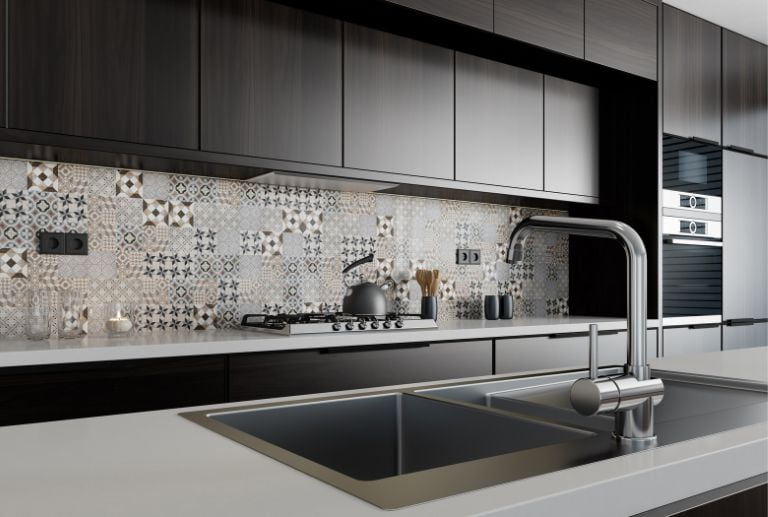When it comes to kitchen design, the backsplash plays a crucial role in both aesthetics and functionality. Not only does it protect your walls from spills and splatters, but it also adds a decorative element that can tie your entire kitchen together. Choosing the perfect kitchen backsplash can be a fun but challenging task. To help you make the right decision, we’ve put together a list of tips to guide you through the selection process.
1. Consider Your Kitchen's Style:
Before you start browsing through endless tile options, think about the overall style of your kitchen. Are you aiming for a classic, modern, rustic, or eclectic look? Your backsplash should complement your kitchen’s style and color scheme. For instance, sleek subway tiles work well in modern kitchens, while natural stone might be a better fit for a rustic space.
2. Think About Maintenance:
Practicality is key when selecting a kitchen backsplash. Consider how much maintenance you’re willing to put in. Some materials, like glass and stainless steel, are easy to clean and require minimal upkeep. Others, such as porous natural stone, may need more frequent sealing and care. Make sure your choice aligns with your lifestyle and cleaning preferences.
3. Play with Backsplash Color:
The color of your backsplash can set the tone for the entire kitchen. If you have a neutral kitchen, a bold and colorful backsplash can be a stunning focal point. Conversely, if your kitchen is already vibrant, a more subdued backsplash can provide balance. Don’t be afraid to experiment with color, but ensure it harmonizes with the existing elements.
4. Experiment with Backsplash Materials:
Backsplashes come in a variety of materials, from ceramic and porcelain tiles to glass, metal, and even reclaimed wood. Each material has its unique aesthetic and functional qualities. Consider how the material will interact with your kitchen’s environment, such as its heat resistance, durability, and ease of cleaning.
5. Take Tile Size and Pattern into Account:
The size and pattern of the tiles can dramatically impact the look of your backsplash. Larger tiles can create a sleek and contemporary feel, while smaller mosaic tiles can add intricate detail and texture. The pattern, whether it’s herringbone, subway, or a custom design, should complement the overall kitchen style.
6. Don't Forget About Grout:
Grout color and width are often overlooked but can make a significant difference in the final appearance of your backsplash. Dark grout can add contrast and emphasize the tile pattern, while lighter grout blends in for a seamless look. Additionally, consider the width of the grout lines, as narrower lines provide a more modern and continuous appearance.
7. Budget Wisely:
Set a budget for your kitchen backsplash project and stick to it. Keep in mind that some materials and designs may be more expensive than others. Consider the cost of both materials and installation when planning your budget. Be open to alternative materials or patterns that can achieve a similar look at a lower cost.
8. Gather Inspiration:
Browse home design magazines, websites, and social media platforms to gather inspiration for your kitchen backsplash. Create a mood board or a digital folder with images of backsplash designs you love. This can help you refine your style preferences and communicate your vision to designers or contractors.
Choosing the perfect kitchen backsplash is a balance between style, functionality, and budget. Take your time to explore different materials, colors, and patterns to find the one that suits your kitchen’s unique personality. Remember that your backsplash is not only a practical element but also an opportunity to showcase your design creativity and make your kitchen truly shine. With these tips in mind, you’ll be well on your way to creating a kitchen backsplash that you’ll love for years to come.


